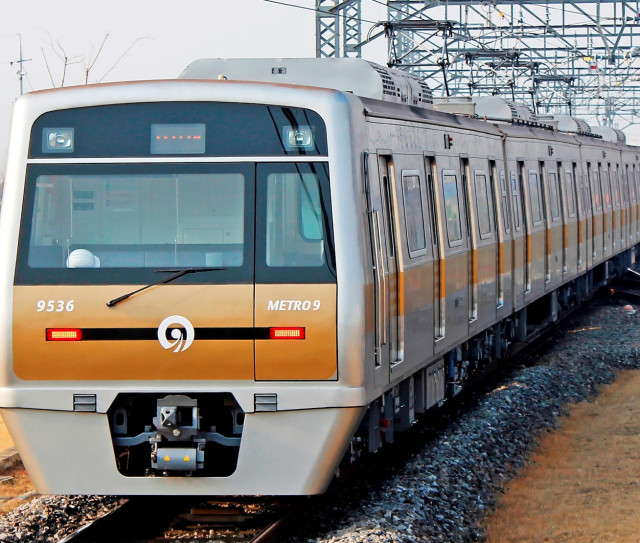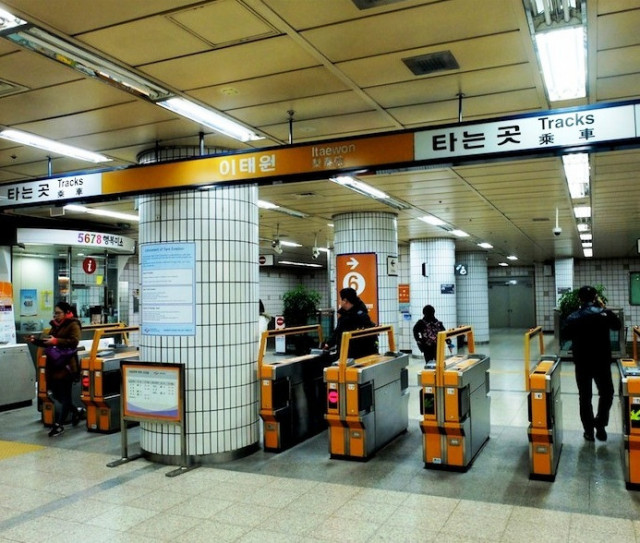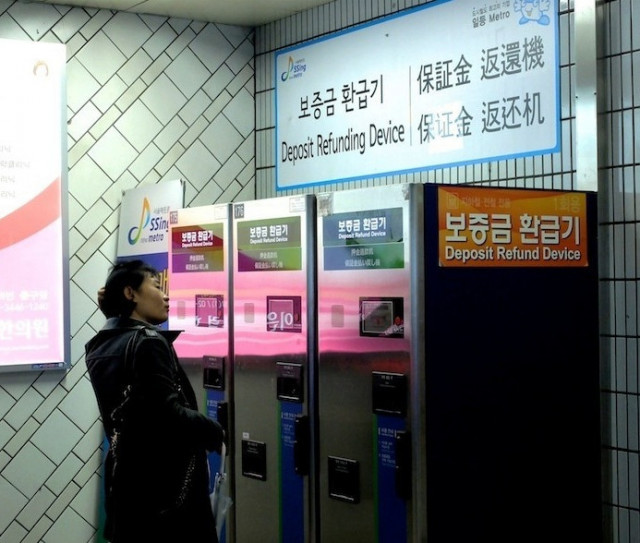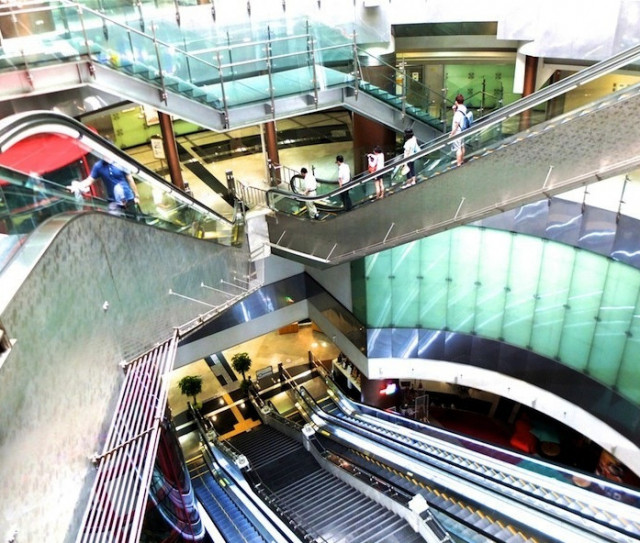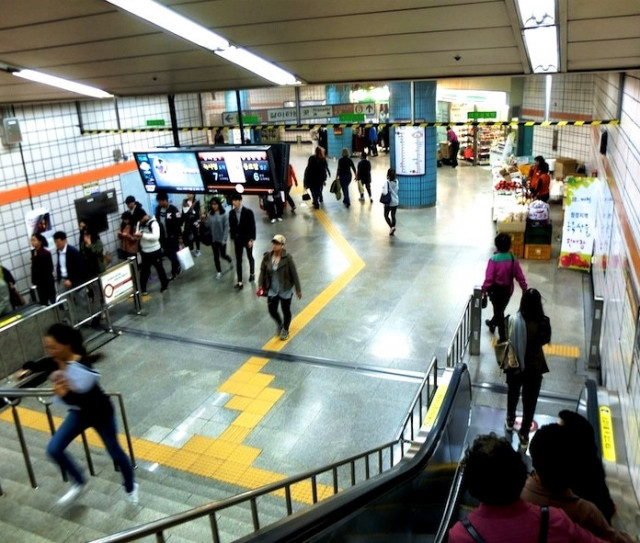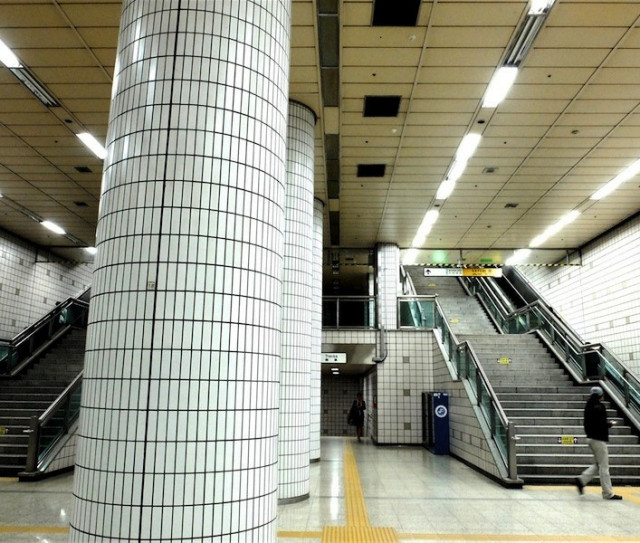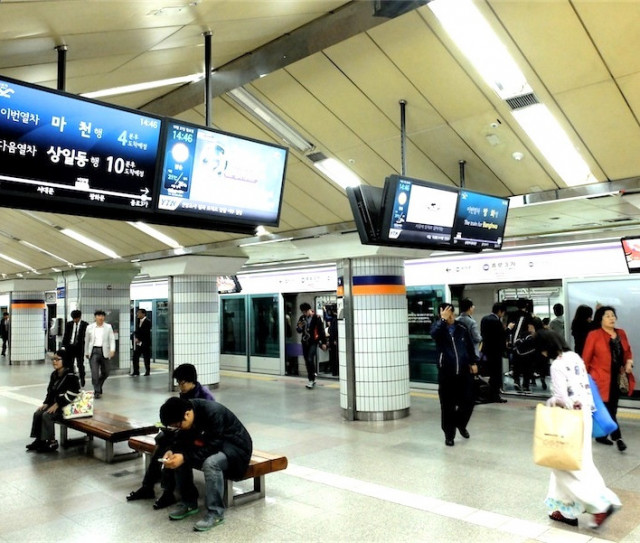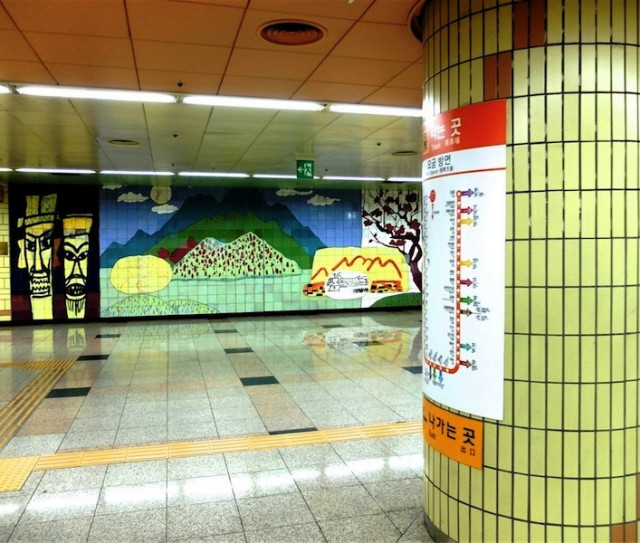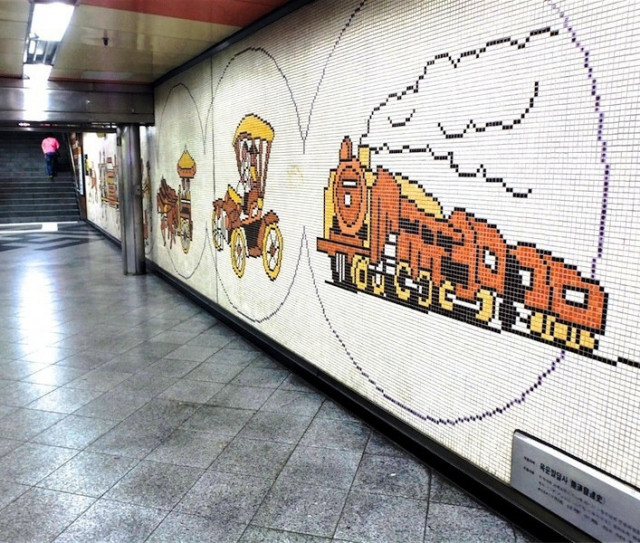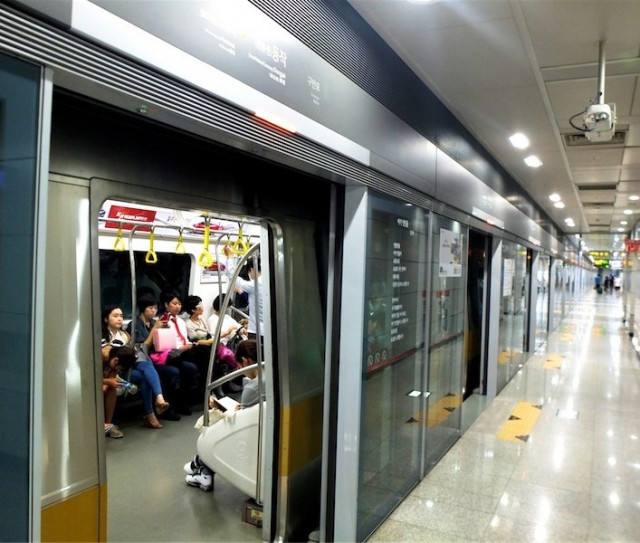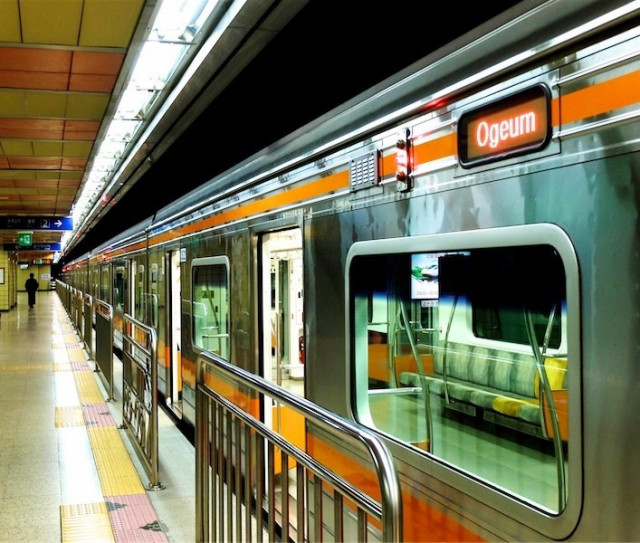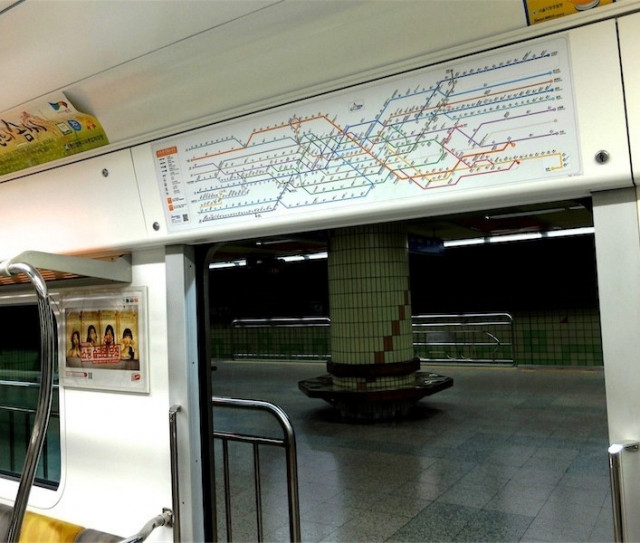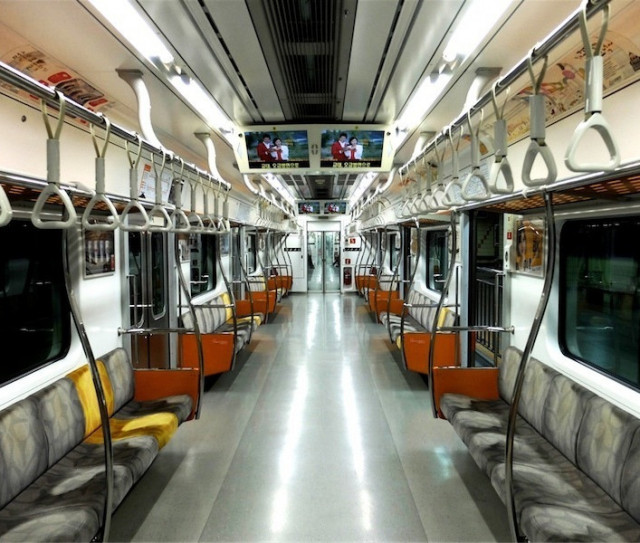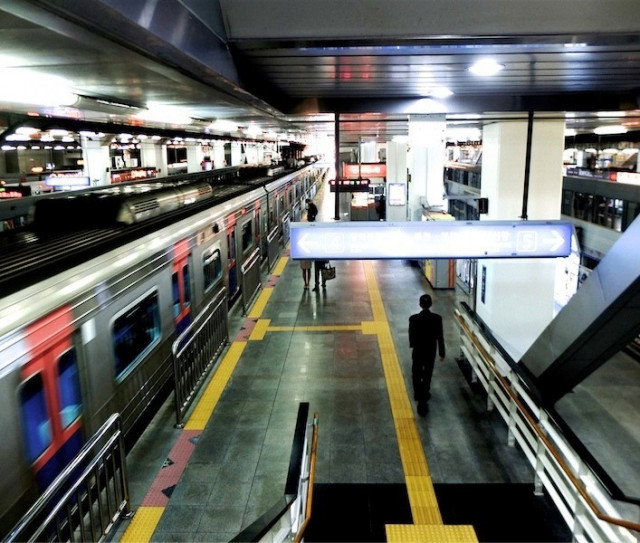- Line 1
-
Soyosan소요산
-
Dongducheon동두천
-
Bosan보산
-
Dongducheonjungang동두천중앙
-
Jihaeng지행
-
Deokjeong덕정
-
Deokgye덕계
-
Yangju양주
-
Nogyang녹양
-
Ganeung가능
-
Uijeongbu의정부
-
Hoeryong회룡
-
Mangwolsa망월사
-
Dobongsan도봉산
-
Dobong도봉
-
Banghak방학
-
Chang-dong창동
-
Nokcheon녹천
-
Wolgye월계
-
Kwangwoon Univ.광운대
-
Seokgye석계
-
Sinimun신이문
-
Hankuk Univ. of Foreign Studies외대앞
-
Hoegi회기
-
Cheongnyangni청량리
-
Jegi-dong제기동
-
Sinseol-dong신설동
-
Dongmyo동묘앞
-
Dongdaemun동대문
-
Jongno 5(o)-ga종로5가
-
Jongno 3(sam)-ga종로3가
-
Jonggak종각
-
City Hall시청
-
Seoul서울
-
Namyeong남영
-
Yongsan용산
-
Noryangjin노량진
-
Daebang대방
-
Singil신길
-
Yeongdeungpo영등포
-
Sindorim신도림
-
Guro구로
-
Guro구로
-
Guil구일
-
Gaebong개봉
-
Oryu-dong오류동
-
Onsu온수
-
Yeokgok역곡
-
Sosa소사
-
Bucheon부천
-
Jung-dong중동
-
Songnae송내
-
Bugae부개
-
Bupyeong부평
-
Baegun백운
-
Dongam동암
-
Ganseok간석
-
Juan주안
-
Dohwa도화
-
Jemulpo제물포
-
Dowon도원
-
Dongincheon동인천
-
Incheon인천
-
Guro구로
-
Gasan Digital Complex가산디지털단지
-
Doksan독산
-
Geumcheon-gu Office금천구청
-
Seoksu석수
-
Gwanak관악
-
Anyang안양
-
Myeonghak명학
-
Geumjeong금정
-
Gunpo군포
-
Dangjeong당정
-
Uiwang의왕
-
Sungkyunkwan University성균관대
-
Hwaseo화서
-
Suwon수원
-
Seryu세류
-
Byeongjeom병점
-
Sema세마
-
Osan College오산대
-
Osan오산
-
Jinwi진위
-
Songtan송탄
-
Seojeong-ri서정리
-
Jije지제
-
Pyeongtaek평택
-
Seonghwan성환
-
Jiksan직산
-
Dujeong두정
-
Cheonan천안
-
Bongmyeong봉명
-
Ssangyong쌍용
-
Asan아산
-
Baebang배방
-
Onyangoncheon온양온천
-
Sinchang신창
-
Geumcheon-gu Office금천구청
-
Gwangmyeong광명
- Byeongjeom
-
Seodongtan서동탄역
- Line 2
-
City Hall시청
-
Euljiro 1-ga을지로입구
-
Euljiro 3-ga을지로3가
-
Euljiro 4-ga을지로4가
-
Dongdaemun History & Culture Park동대문역사문화공원
-
Sindang신당
-
Sangwangsimni상왕십리
-
Wangsimni왕십리
-
Hanyang University한양대
-
Ttukseom뚝섬
-
Seongsu성수
-
Konkuk University건대입구
-
Guui구의
-
Gangbyeon강변
-
Jamsillaru잠실나루
-
Jamsil잠실
-
Sincheon신천
-
Sports Complex종합운동장
-
Samseong삼성
-
Seolleung선릉
-
Yeoksam역삼
-
Gangnam강남
-
Seoul Nat'l Univ. of Education교대
-
Seocho서초
-
Bangbae방배
-
Sadang사당
-
Nakseongdae낙성대
-
Seoul National University서울대입구
-
Bongcheon봉천
-
Sillim신림
-
Sindaebang신대방
-
Guro Digital Complex구로디지털단지
-
Daerim대림
-
Sindorim신도림
-
Mullae문래
-
Yeongdeungpo-gu Office영등포구청
-
Dangsan당산
-
Hapjeong합정
-
Hongik Univ.홍대입구
-
Sinchon신촌역
-
Ewha Woman's Univniversity이대
-
Ahyeon아현
-
Chungjeongno충정로
-
Seongsu성수
-
Yongdap용답
-
Sindap신답
-
Yongdu용두
-
Sinseol-dong신설동
-
Sindorim신도림
-
Dorimcheon도림천
-
Yangcheon-gu Office양천구청
-
Sinjeongnegeori신정네거리
-
Kkachisan까치산
- Line 3
-
Daehwa대화
-
Juyeop주엽
-
Jeongbalsan정발산
-
Madu마두
-
Baekseok백석
-
Daegok대곡
-
Hwajeong화정
-
Wondang원당
-
Wonheung원흥
-
Samsong삼송
-
Jichuk지축
-
Gupabal구파발
-
Yeonsinnae연신내
-
Bulgwang불광
-
Nokbeon녹번
-
Hongje홍제
-
Muakjae무악재
-
Dongnimmun독립문
-
Gyeongbokgung경복궁
-
Anguk안국
-
Jongno 3(sam)-ga종로3가
-
Euljiro 3(sam)-ga을지로3가
-
Chungmuro충무로
-
Dongguk University동대입구
-
Yaksu약수
-
Geumho금호
-
Oksu옥수
-
Apgujeong압구정
-
Sinsa신사
-
Jamwon잠원
-
Express Bus Terminal고속터미널
-
Seoul Nat'l Univ. of Education교대
-
Nambu Bus Terminal남부터미널
-
Yangjae양재
-
Maebong매봉
-
Dogok도곡
-
Daechi대치
-
Hangnyeoul학여울
-
Daecheong대청
-
Irwon일원
-
Suseo수서
-
Garak Market가락시장
-
National Police Hospital경찰병원
-
Ogeum오금
- Line 4
-
Jinjeop진접
-
Onam오남
-
ByeollaeByeolgaram별내별가람
-
Danggogae당고개
-
Sanggye상계
-
Nowon노원
-
Chang-dong창동
-
Ssangmun쌍문
-
Suyu수유
-
Mia미아
-
Miasageori미아사거리
-
Gireum길음
-
Sungshin Women's Univ.성신여대입구
-
Hansung University한성대입구
-
Hyehwa혜화
-
Dongdaemun동대문
-
Dongdaemun History & Culture Park동대문역사문화공원
-
Chungmuro충무로
-
Myeong-dong명동
-
Hoehyeon회현
-
Seoul서울
-
Sookmyung Women's Univ.숙대입구
-
Samgakji삼각지
-
Sinyongsan신용산
-
Ichon이촌
-
Dongjak동작
-
Chongshin University총신대입구
-
Sadang사당
-
Namtaeryeong남태령
-
Seonbawi선바위
-
Seoul Racecourse Park경마공원
-
Seoul Grand Park대공원
-
Gwacheon과천
-
Government Complex Gwacheon정부과천청사
-
Indeogwon인덕원
-
Pyeongchon평촌
-
Beomgye범계
-
Geumjeong금정
-
Sanbon산본
-
Surisan수리산
-
Daeyami대야미
-
Banwol반월
-
Sangnoksu상록수
-
Hanyang Univ. at Ansan한대앞
-
Jungang중앙
-
Gojan고잔
-
Choji초지
-
Ansan안산
-
Singil Oncheon신길온천
-
Jeongwang정왕
-
Oido오이도
- Line 5
-
Banghwa방화
-
Gaehwasan개화산
-
Gimpo Int'l Airport김포공항
-
Songjeong송정
-
Magok마곡
-
Balsan발산
-
Ujangsan우장산
-
Hwagok화곡
-
Kkachisan까치산
-
Sinjeong신정
-
Mok-dong목동
-
Omokgyo오목교
-
Yangpyeong양평
-
Yeongdeungpo-gu Office영등포구청
-
Yeongdeungpo Market영등포시장
-
Singil신길
-
Yeouido여의도
-
Yeouinaru여의나루
-
Mapo마포
-
Gongdeok공덕
-
Aeogae애오개
-
Chungjeongno충정로
-
Seodaemun서대문
-
Gwanghwamun광화문
-
Jongno 3-ga종로3가
-
Euljiro 4-ga을지로4가
-
Dongdaemun History & Culture Park동대문역사문화공원
-
Cheonggu청구
-
Singeumho신금호
-
Haengdang행당
-
Wangsimni왕십리
-
Majang마장
-
Dapsimni답십리
-
Janghanpyeong장한평
-
Gunja군자
-
Achasan아차산
-
Gwangnaru광나루
-
Cheonho천호
-
Gangdong강동
-
Gangdong강동
-
Gil-dong길동
-
Gubeundari굽은다리
-
Myeongil명일
-
Godeok고덕
-
Sangil-dong상일동
-
Gangil강일
-
Misa미사
-
Hanam Pungsan하남풍산
-
Hanam City Hall하남시청
-
Hanam Geomdansan하남검단산
-
Gangdong강동
-
Dunchon-dong둔촌동
-
Olympic Park올림픽공원
-
Bangi방이
-
Ogeum오금
-
Gaerong개롱
-
Geoyeo거여
-
Macheon마천
- Line 6
-
Eungam응암
-
Saejeol새절
-
Jeungsan증산
-
Digital Media City디지털미디어시티
-
World Cup Stadium월드컵경기장
-
Mapo-gu Office마포구청
-
Mangwon망원
-
Hapjeong합정
-
Sangsu상수
-
Gwangheungchang광흥창
-
Daeheung대흥
-
Gongdeok공덕
-
Hyochang Park효창공원앞
-
Samgakji삼각지
-
Noksapyeong녹사평
-
Itaewon이태원
-
Hangangjin한강진
-
Beotigogae버티고개
-
Yaksu약수
-
Cheonggu청구
-
Sindang신당
-
Dongmyo동묘앞
-
Changsin창신
-
Bomun보문
-
Anam안암
-
Korea University고려대
-
Wolgok월곡
-
Sangwolgok상월곡
-
Dolgoji돌곶이
-
Seokgye석계
-
Taereung태릉입구
-
Hwarangdae화랑대
-
Bonghwasan봉화산
-
Eungam응암
-
Yeokchon역촌
-
Bulgwang불광
-
Dokbawi독바위
-
Yeonsinnae연신내
-
Gusan구산
- Line 7
-
Jangam장암
-
Dobongsan도봉산
-
Suraksan수락산
-
Madeul마들
-
Nowon노원
-
Junggye중계
-
Hagye하계
-
Gongneung공릉
-
Taereung태릉입구
-
Meokgol먹골
-
Junghwa중화
-
Sangbong상봉
-
Myeonmok면목
-
Sagajeong사가정
-
Yongmasan용마산
-
Junggok중곡
-
Gunja군자
-
Children's Grand Park어린이대공원
-
Konkuk University건대입구
-
Ttukseom Resort뚝섬유원지
-
Cheongdam청담
-
Gangnam-gu Office남구청
-
Hak-dong학동
-
Nonhyeon논현
-
Banpo반포
-
Express Bus Terminal고속터미널
-
Naebang내방
-
Isu이수
-
Namseong남성
-
Soongsil University숭실대입구
-
Sangdo상도
-
Jangseungbaegi장승배기
-
Sindaebangsamgeori신대방삼거리
-
Boramae보라매
-
Sinpung신풍
-
Daerim대림
-
Namguro남구로
-
Gasan Digital Complex가산디지털단지
-
Cheolsan철산
-
Gwangmyeongsageori광명사거리
-
Cheonwang천왕
-
Onsu온수
-
Kkachiul까치울
-
Bucheon Stadium부천종합운동장
-
Chunui춘의
-
Sinjung-dong신중동
-
Bucheon City Hall부천시청
-
Sang-dong상동
-
Samsan Gymnasium삼산체육관
-
Gulpocheon굴포천
-
Bupyeong-gu Office부평구청
- Line 8
-
Amsa암사
-
Cheonho천호
-
Gangdong-gu Office강동구청
-
Mongchontoseong몽촌토성
-
Jamsil잠실
-
Seokchon석촌
-
Songpa송파
-
Garak Market가락시장
-
Munjeong문정
-
Jangji장지
-
Bokjeong복정
-
Sanseong산성
-
Namhansanseong남한산성입구
-
Dandaeogeori단대오거리
-
Sinheung신흥
-
Sujin수진
-
Moran모란
- Line 9
-
Gaehwa개화
-
Gimpo Int'l Airport김포공항
-
Airport Market공항시장
-
Sinbanghwa신방화
-
Magongnaru마곡나루
-
Yangcheon Hyanggyo양천향교
-
Gayang가양
-
Jeungmi증미
-
Deungchon등촌
-
Yeomchang염창
-
Sinmokdong신목동
-
Seonyudo선유도
-
Dangsan당산
-
National Assembly국회의사당
-
Yeouido여의도
-
Saetgang샛강
-
Noryangjin노량진
-
Nodeul노들
-
Heukseok흑석
-
Dongjak동작
-
Gubanpo구반포
-
Sinbanpo신반포
-
Express Bus Terminal고속터미널
-
Sapyeong사평
-
Sinnonhyeon신논현
-
Eonju언주
-
Seonjeongneung선정릉
-
Samseongjungang삼성중앙
-
Bongeunsa봉은사
-
Sports Complex종합운동장
-
Samjeon삼전
-
Seokchon Gobun석촌고분
-
Seokchon석촌
-
Songpanaru송파나루
-
Hanseong Baekje한성백제
-
Olympic Park올림픽공원
-
Dunchon Oryun둔촌오륜
-
VHS Medical Center중앙보훈병원
- AREX
-
Seoul서울
-
Gongdeok공덕
-
Hongik Univ.홍대입구
-
Digital Media City디지털미디어시티
-
Magongnaru마곡나루
-
Gimpo Int'l Airport김포공항
-
Gyeyang계양
-
Geomam검암
-
Cheongna International City청라국제도시
-
Yeongjong영종역
-
Unseo영종
-
Incheon International Airport Cargo Terminal운서
-
Incheon International Airport T1인천공항 1터미널역
-
Incheon International Airport T2인천공항2터미널역
- Gyeongui–Jungang Line
-
Munsan문산
-
Paju파주
-
Wollong월롱
-
Geumchon금촌
-
Geumneung금릉
-
Unjeong운정
-
Yadang야당
-
Tanhyeon탄현
-
Ilsan일산
-
Pungsan풍산
-
Baengma백마
-
Goksan곡산
-
Daegok대곡
-
Neunggok능곡
-
Haengsin행신
-
Gangmae강매
-
Hwajeon화전
-
Susaek수색
-
Digital Media City디지털미디어시티
-
Gajwa가좌
-
Gajwa가좌
-
Sinchon신촌
-
Seoul서울
-
Gajwa가좌
-
Hongik Univ.홍대입구
-
Sogang Univ.서강대
-
Gongdeok공덕
-
Hyochang Park효창공원앞
-
Yongsan용산
-
Ichon이촌
-
Seobinggo서빙고
-
Hannam한남
-
Oksu옥수
-
Eungbong응봉
-
Wangsimni왕십리
-
Cheongnyangni청량리
-
Hoegi회기
-
Jungnang중랑
-
Sangbong상봉
-
Mangu망우
-
Yangwon양원
-
Guri구리
-
Donong도농
-
Yangjeong양정
-
Deokso덕소
-
Dosim도심
-
Paldang팔당
-
Ungilsan운길산
-
Yangsu양수
-
Sinwon신원
-
Guksu국수
-
Asin아신
-
Obin오빈
-
Yangpyeong양평
-
Wondeok원덕
-
Yongmun용문
-
Jipyeong지평
- Gyeongchun Line
-
Kwangwoon Univ.광운대
-
Sangbong상봉
-
Mangu망우
-
Sinnae신내
-
Galmae갈매
-
Byeollae별내
-
Toegyewon퇴계원
-
Sareung사릉
-
Geumgok금곡
-
Pyeongnae Hopyeong평내호평
-
Cheonmasan천마산
-
Maseok마석
-
Daeseong-ri대성리
-
Cheongpyeong청평
-
Sangcheon상천
-
Gapyeong가평
-
Gulbongsan굴봉산
-
Baegyang-ri백양리
-
Gangchon강촌
-
Gimyujeong김유정
-
Namchuncheon남춘천
-
Chuncheon춘천
- Suin–Bundang Line
-
Cheongnyangni청량리
-
Wangsimni왕십리
-
Seoul Forest서울숲
-
Apgujeong rodeo압구정 로데오
-
Gangnam-gu Office강남구청
-
Seonjeongneung선정릉
-
Seolleung선릉
-
Hanti한티
-
Dogok도곡
-
Guryong구룡
-
Gaepo-dong개포동
-
Daemosan대모산 입구
-
Suseo수서
-
Bokjeong복정
-
Gachon University가천대
-
Taepyeong태평
-
Moran모란
-
Yatap야탑
-
Imae이매
-
Seohyeon서현
-
Sunae수내
-
Jeongja정자
-
Migeum정자
-
Ori오리
-
Jukjeon죽전
-
Bojeong보정
-
Guseong구성
-
Singal신갈
-
Giheung기흥
-
Sanggal상갈
-
Cheongmyeong청명
-
Yeongtong영통
-
Mangpo망포
-
Maetan Gwonseon매탄권선
-
Suwon City Hall수원시청
-
Maegyo매교
-
Suwon수원
-
Gosaek고색
-
Omokcheon오목천
-
Eocheon어천
-
Yamok야목
-
Sari사리
-
Hanyang Univ. at Ansan한대앞
-
Jungang중앙
-
Gojan고잔
-
Choji초지
-
Ansan안산
-
Singil Oncheon신길온천
-
Jeongwang정왕
-
Oido오이도
-
Darwol달월
-
Wolgot월곶
-
Soraepogu소래포구
-
Incheon Nonhyeon인천논현
-
Hogupo호구포
-
Namdong Induspark남동인더스파크
-
Woninjae원인재
-
Yeonsu연수
-
Songdo송도
-
Inha Univ.인하대
-
Sungui숭의
-
Sinpo신포
-
Incheon인천
- Shinbundang Line
-
Sinsa신사
-
Nonhyeon논현
-
Sinnonhyeon신논현
-
Gangnam강남
-
Yangjae양재
-
Yangjae Citizen's Forest양재시민의숲
-
Cheonggyesan청계산입구
-
Pangyo판교
-
Jeongja정자
-
Migeum미금역
-
Dongcheon동천
-
Suji-gu Office수지구청
-
Seongbok성복
-
Sanghyeon상현
-
Gwanggyo Jungang광교중앙
-
Gwanggyo광교
- Incheon Line 1
-
Gyeyang계양
-
Gyulhyeon귤현
-
Bakchon박촌
-
Imhak임학
-
Gyesan계산
-
Gyeongin Nat. Univ.of Education경인교대입구
-
Jakjeon작전
-
Galsan갈산
-
Bupyeong-gu Office부평구청
-
Bupyeong Market부평시장
-
Bupyeong부평
-
Dongsu동수
-
Bupyeongsamgeori부평삼거리
-
Ganseogogeori간석오거리
-
Incheon City Hall인천시청역
-
Arts Center예술회관
-
Incheon Bus Terminal인천터미널
-
Munhak Sports Complex문학경기장
-
Seonhak선학
-
Sinyeonsu신연수
-
Woninjae원인재
-
Dongchun동춘
-
Dongmak동막
-
Campus Town캠퍼스타운
-
Technopark테크노파크
-
BIT Zone지식정보단지
-
University of Incheon인천대입구
-
Central Park센트럴파크
-
International Business District국제업무지구
- Incheon Line 2
-
Unyeon운연
-
Incheon Grand Park인천대공원
-
Namdong-gu Office남동구청
-
Mansu만수
-
Moraenae Market모래내시장
-
Seokcheon Sageori석천사거리
-
Incheon City Hall인천시청
-
Seokbawi Market석바위시장
-
Citizens Park시민공원
-
Juan주안
-
Juan National Industrial Complex주안국가산단
-
Gajaeul가재울
-
Incheon Gajwa인천가좌
-
West Woman's Community Center서부여성회관
-
Seongnam석남
-
Gajeong Jungang Market가정중앙시장
-
Gajeong가정
-
Seo-gu Office서구청
-
Asiad Stadium아시아드경기장
-
Geombawi검바위
-
Geomam검암
-
Dokjeong독정
-
Wanjeong완정
-
Majeon마전
-
Geomdan Sageori검단사거리
-
Wanggil왕길
-
Geomdan Oryu검단오류
- EverLine
-
Giheung기흥
-
Kangnam University강남대
-
Jiseok지석
-
Eojeong어정
-
Dongbaek동백
-
Chodang초당
-
Samga삼가
-
City Hall Yongin Univ.시청·용인대
-
Myongji University명지대
-
Gimnyangjang김량장
-
Stadium Songdam College운동장·송담대
-
Gojin고진
-
Bopyeong보평
-
Dunjeon둔전
-
Jeondae Everland전대·에버랜드
- U Line
-
Balgok발곡
-
Hoeryong회룡
-
Beomgol범골
-
Uijeongbu의정부
-
City Hall의정부시청
-
Heungseon흥선
-
Uijeongbu Jungang의정부중앙
-
Dongo동오
-
Saemal새말
-
Gyeonggi Provincial Government North Office경기도청 북부청사
-
Hyoja효자
-
Gonje곤제
-
Eoryong어룡
-
Songsan송산
-
Tapseok탑석
- Ui Line
-
Bukhansan Ui북한산우이
-
Solbat Park솔밭공원
-
April 19th Ntnl Cemetery4.19민주묘지
-
Gaori가오리
-
Hwagye화계
-
Samyang삼양
-
Samyangsageori삼양사거리
-
Solsaem솔샘
-
Bukhansan Bogungmun북한산보국문
-
Jeongneung정릉
-
Sungshin Women's University성신여대입구
-
Bomun보문
-
Sinseol-dong신설동
- Gyeonggang Line
-
Pangyo판교
-
Imae이매
-
Samdong삼동
-
Gyeonggi Gwangju경기광주
-
Chowol초월
-
Gonjiam곤지암
-
Sindundoyechon신둔도예촌
-
Icheon이천
-
Bubal부발
-
Sejongdaewangneung세종대왕릉
-
Yeoju여주
- Seohae Line
-
Ilsan일산
-
Pungsan풍산
-
Baengma백마
-
Goksan곡산
-
Daegok대곡
-
Neunggok능곡
-
Gimpo Int'l Airport김포공항
-
Wonjong원종
-
Bucheon Stadium부천종합운동장
-
Sosa소사
-
Sosaeul소새울
-
Siheung Daeya시흥대야
-
Sincheon신천
-
Sinhyeon신현
-
Siheung City Hall시흥시청
-
Siheung Neunggok시흥능곡
-
Dalmi달미
-
Seonbu선부
-
Choji초지
-
Wongok원곡
-
Wonsi원시
- Gimpo Goldline
-
Yangchon양촌
-
Gurae구래
-
Masan마산
-
Janggi장기
-
Unyang운양
-
Geolpo Bukbyeon걸포북변
-
Sau사우
-
Pungmu풍무
-
Gochon고촌
-
Gimpo Int'l Airport김포공항
- No matches
- Line 1
-
Soyosan소요산
-
Dongducheon동두천
-
Bosan보산
-
Dongducheonjungang동두천중앙
-
Jihaeng지행
-
Deokjeong덕정
-
Deokgye덕계
-
Yangju양주
-
Nogyang녹양
-
Ganeung가능
-
Uijeongbu의정부
-
Hoeryong회룡
-
Mangwolsa망월사
-
Dobongsan도봉산
-
Dobong도봉
-
Banghak방학
-
Chang-dong창동
-
Nokcheon녹천
-
Wolgye월계
-
Kwangwoon Univ.광운대
-
Seokgye석계
-
Sinimun신이문
-
Hankuk Univ. of Foreign Studies외대앞
-
Hoegi회기
-
Cheongnyangni청량리
-
Jegi-dong제기동
-
Sinseol-dong신설동
-
Dongmyo동묘앞
-
Dongdaemun동대문
-
Jongno 5(o)-ga종로5가
-
Jongno 3(sam)-ga종로3가
-
Jonggak종각
-
City Hall시청
-
Seoul서울
-
Namyeong남영
-
Yongsan용산
-
Noryangjin노량진
-
Daebang대방
-
Singil신길
-
Yeongdeungpo영등포
-
Sindorim신도림
-
Guro구로
- Line 1/1
-
Guro구로
-
Guil구일
-
Gaebong개봉
-
Oryu-dong오류동
-
Onsu온수
-
Yeokgok역곡
-
Sosa소사
-
Bucheon부천
-
Jung-dong중동
-
Songnae송내
-
Bugae부개
-
Bupyeong부평
-
Baegun백운
-
Dongam동암
-
Ganseok간석
-
Juan주안
-
Dohwa도화
-
Jemulpo제물포
-
Dowon도원
-
Dongincheon동인천
-
Incheon인천
- Line 1/2
-
Guro구로
-
Gasan Digital Complex가산디지털단지
-
Doksan독산
-
Geumcheon-gu Office금천구청
-
Seoksu석수
-
Gwanak관악
-
Anyang안양
-
Myeonghak명학
-
Geumjeong금정
-
Gunpo군포
-
Dangjeong당정
-
Uiwang의왕
-
Sungkyunkwan University성균관대
-
Hwaseo화서
-
Suwon수원
-
Seryu세류
-
Byeongjeom병점
-
Sema세마
-
Osan College오산대
-
Osan오산
-
Jinwi진위
-
Songtan송탄
-
Seojeong-ri서정리
-
Jije지제
-
Pyeongtaek평택
-
Seonghwan성환
-
Jiksan직산
-
Dujeong두정
-
Cheonan천안
-
Bongmyeong봉명
-
Ssangyong쌍용
-
Asan아산
-
Baebang배방
-
Onyangoncheon온양온천
-
Sinchang신창
- Line 1/2/1
-
Geumcheon-gu Office금천구청
-
Gwangmyeong광명
- Line 1/2/2
- Byeongjeom
-
Seodongtan서동탄역
- Line 2
-
City Hall시청
-
Euljiro 1-ga을지로입구
-
Euljiro 3-ga을지로3가
-
Euljiro 4-ga을지로4가
-
Dongdaemun History & Culture Park동대문역사문화공원
-
Sindang신당
-
Sangwangsimni상왕십리
-
Wangsimni왕십리
-
Hanyang University한양대
-
Ttukseom뚝섬
-
Seongsu성수
-
Konkuk University건대입구
-
Guui구의
-
Gangbyeon강변
-
Jamsillaru잠실나루
-
Jamsil잠실
-
Sincheon신천
-
Sports Complex종합운동장
-
Samseong삼성
-
Seolleung선릉
-
Yeoksam역삼
-
Gangnam강남
-
Seoul Nat'l Univ. of Education교대
-
Seocho서초
-
Bangbae방배
-
Sadang사당
-
Nakseongdae낙성대
-
Seoul National University서울대입구
-
Bongcheon봉천
-
Sillim신림
-
Sindaebang신대방
-
Guro Digital Complex구로디지털단지
-
Daerim대림
-
Sindorim신도림
-
Mullae문래
-
Yeongdeungpo-gu Office영등포구청
-
Dangsan당산
-
Hapjeong합정
-
Hongik Univ.홍대입구
-
Sinchon신촌역
-
Ewha Woman's Univniversity이대
-
Ahyeon아현
-
Chungjeongno충정로
- Line 2 Seongsu Branch
-
Seongsu성수
-
Yongdap용답
-
Sindap신답
-
Yongdu용두
-
Sinseol-dong신설동
- Line 2 Sinjeong Branch
-
Sindorim신도림
-
Dorimcheon도림천
-
Yangcheon-gu Office양천구청
-
Sinjeongnegeori신정네거리
-
Kkachisan까치산
- Line 3
-
Daehwa대화
-
Juyeop주엽
-
Jeongbalsan정발산
-
Madu마두
-
Baekseok백석
-
Daegok대곡
-
Hwajeong화정
-
Wondang원당
-
Wonheung원흥
-
Samsong삼송
-
Jichuk지축
-
Gupabal구파발
-
Yeonsinnae연신내
-
Bulgwang불광
-
Nokbeon녹번
-
Hongje홍제
-
Muakjae무악재
-
Dongnimmun독립문
-
Gyeongbokgung경복궁
-
Anguk안국
-
Jongno 3(sam)-ga종로3가
-
Euljiro 3(sam)-ga을지로3가
-
Chungmuro충무로
-
Dongguk University동대입구
-
Yaksu약수
-
Geumho금호
-
Oksu옥수
-
Apgujeong압구정
-
Sinsa신사
-
Jamwon잠원
-
Express Bus Terminal고속터미널
-
Seoul Nat'l Univ. of Education교대
-
Nambu Bus Terminal남부터미널
-
Yangjae양재
-
Maebong매봉
-
Dogok도곡
-
Daechi대치
-
Hangnyeoul학여울
-
Daecheong대청
-
Irwon일원
-
Suseo수서
-
Garak Market가락시장
-
National Police Hospital경찰병원
-
Ogeum오금
- Line 4
-
Jinjeop진접
-
Onam오남
-
ByeollaeByeolgaram별내별가람
-
Danggogae당고개
-
Sanggye상계
-
Nowon노원
-
Chang-dong창동
-
Ssangmun쌍문
-
Suyu수유
-
Mia미아
-
Miasageori미아사거리
-
Gireum길음
-
Sungshin Women's Univ.성신여대입구
-
Hansung University한성대입구
-
Hyehwa혜화
-
Dongdaemun동대문
-
Dongdaemun History & Culture Park동대문역사문화공원
-
Chungmuro충무로
-
Myeong-dong명동
-
Hoehyeon회현
-
Seoul서울
-
Sookmyung Women's Univ.숙대입구
-
Samgakji삼각지
-
Sinyongsan신용산
-
Ichon이촌
-
Dongjak동작
-
Chongshin University총신대입구
-
Sadang사당
-
Namtaeryeong남태령
-
Seonbawi선바위
-
Seoul Racecourse Park경마공원
-
Seoul Grand Park대공원
-
Gwacheon과천
-
Government Complex Gwacheon정부과천청사
-
Indeogwon인덕원
-
Pyeongchon평촌
-
Beomgye범계
-
Geumjeong금정
-
Sanbon산본
-
Surisan수리산
-
Daeyami대야미
-
Banwol반월
-
Sangnoksu상록수
-
Hanyang Univ. at Ansan한대앞
-
Jungang중앙
-
Gojan고잔
-
Choji초지
-
Ansan안산
-
Singil Oncheon신길온천
-
Jeongwang정왕
-
Oido오이도
- Line 5
-
Banghwa방화
-
Gaehwasan개화산
-
Gimpo Int'l Airport김포공항
-
Songjeong송정
-
Magok마곡
-
Balsan발산
-
Ujangsan우장산
-
Hwagok화곡
-
Kkachisan까치산
-
Sinjeong신정
-
Mok-dong목동
-
Omokgyo오목교
-
Yangpyeong양평
-
Yeongdeungpo-gu Office영등포구청
-
Yeongdeungpo Market영등포시장
-
Singil신길
-
Yeouido여의도
-
Yeouinaru여의나루
-
Mapo마포
-
Gongdeok공덕
-
Aeogae애오개
-
Chungjeongno충정로
-
Seodaemun서대문
-
Gwanghwamun광화문
-
Jongno 3-ga종로3가
-
Euljiro 4-ga을지로4가
-
Dongdaemun History & Culture Park동대문역사문화공원
-
Cheonggu청구
-
Singeumho신금호
-
Haengdang행당
-
Wangsimni왕십리
-
Majang마장
-
Dapsimni답십리
-
Janghanpyeong장한평
-
Gunja군자
-
Achasan아차산
-
Gwangnaru광나루
-
Cheonho천호
-
Gangdong강동
- Line 5/1
-
Gangdong강동
-
Gil-dong길동
-
Gubeundari굽은다리
-
Myeongil명일
-
Godeok고덕
-
Sangil-dong상일동
-
Gangil강일
-
Misa미사
-
Hanam Pungsan하남풍산
-
Hanam City Hall하남시청
-
Hanam Geomdansan하남검단산
- Line 5/2
-
Gangdong강동
-
Dunchon-dong둔촌동
-
Olympic Park올림픽공원
-
Bangi방이
-
Ogeum오금
-
Gaerong개롱
-
Geoyeo거여
-
Macheon마천
- Line 6
-
Eungam응암
-
Saejeol새절
-
Jeungsan증산
-
Digital Media City디지털미디어시티
-
World Cup Stadium월드컵경기장
-
Mapo-gu Office마포구청
-
Mangwon망원
-
Hapjeong합정
-
Sangsu상수
-
Gwangheungchang광흥창
-
Daeheung대흥
-
Gongdeok공덕
-
Hyochang Park효창공원앞
-
Samgakji삼각지
-
Noksapyeong녹사평
-
Itaewon이태원
-
Hangangjin한강진
-
Beotigogae버티고개
-
Yaksu약수
-
Cheonggu청구
-
Sindang신당
-
Dongmyo동묘앞
-
Changsin창신
-
Bomun보문
-
Anam안암
-
Korea University고려대
-
Wolgok월곡
-
Sangwolgok상월곡
-
Dolgoji돌곶이
-
Seokgye석계
-
Taereung태릉입구
-
Hwarangdae화랑대
-
Bonghwasan봉화산
- Line 6/1
-
Eungam응암
-
Yeokchon역촌
-
Bulgwang불광
-
Dokbawi독바위
-
Yeonsinnae연신내
-
Gusan구산
- Line 7
-
Jangam장암
-
Dobongsan도봉산
-
Suraksan수락산
-
Madeul마들
-
Nowon노원
-
Junggye중계
-
Hagye하계
-
Gongneung공릉
-
Taereung태릉입구
-
Meokgol먹골
-
Junghwa중화
-
Sangbong상봉
-
Myeonmok면목
-
Sagajeong사가정
-
Yongmasan용마산
-
Junggok중곡
-
Gunja군자
-
Children's Grand Park어린이대공원
-
Konkuk University건대입구
-
Ttukseom Resort뚝섬유원지
-
Cheongdam청담
-
Gangnam-gu Office남구청
-
Hak-dong학동
-
Nonhyeon논현
-
Banpo반포
-
Express Bus Terminal고속터미널
-
Naebang내방
-
Isu이수
-
Namseong남성
-
Soongsil University숭실대입구
-
Sangdo상도
-
Jangseungbaegi장승배기
-
Sindaebangsamgeori신대방삼거리
-
Boramae보라매
-
Sinpung신풍
-
Daerim대림
-
Namguro남구로
-
Gasan Digital Complex가산디지털단지
-
Cheolsan철산
-
Gwangmyeongsageori광명사거리
-
Cheonwang천왕
-
Onsu온수
-
Kkachiul까치울
-
Bucheon Stadium부천종합운동장
-
Chunui춘의
-
Sinjung-dong신중동
-
Bucheon City Hall부천시청
-
Sang-dong상동
-
Samsan Gymnasium삼산체육관
-
Gulpocheon굴포천
-
Bupyeong-gu Office부평구청
- Line 8
-
Amsa암사
-
Cheonho천호
-
Gangdong-gu Office강동구청
-
Mongchontoseong몽촌토성
-
Jamsil잠실
-
Seokchon석촌
-
Songpa송파
-
Garak Market가락시장
-
Munjeong문정
-
Jangji장지
-
Bokjeong복정
-
Sanseong산성
-
Namhansanseong남한산성입구
-
Dandaeogeori단대오거리
-
Sinheung신흥
-
Sujin수진
-
Moran모란
- Line 9
-
Gaehwa개화
-
Gimpo Int'l Airport김포공항
-
Airport Market공항시장
-
Sinbanghwa신방화
-
Magongnaru마곡나루
-
Yangcheon Hyanggyo양천향교
-
Gayang가양
-
Jeungmi증미
-
Deungchon등촌
-
Yeomchang염창
-
Sinmokdong신목동
-
Seonyudo선유도
-
Dangsan당산
-
National Assembly국회의사당
-
Yeouido여의도
-
Saetgang샛강
-
Noryangjin노량진
-
Nodeul노들
-
Heukseok흑석
-
Dongjak동작
-
Gubanpo구반포
-
Sinbanpo신반포
-
Express Bus Terminal고속터미널
-
Sapyeong사평
-
Sinnonhyeon신논현
-
Eonju언주
-
Seonjeongneung선정릉
-
Samseongjungang삼성중앙
-
Bongeunsa봉은사
-
Sports Complex종합운동장
-
Samjeon삼전
-
Seokchon Gobun석촌고분
-
Seokchon석촌
-
Songpanaru송파나루
-
Hanseong Baekje한성백제
-
Olympic Park올림픽공원
-
Dunchon Oryun둔촌오륜
-
VHS Medical Center중앙보훈병원
- AREX
-
Seoul서울
-
Gongdeok공덕
-
Hongik Univ.홍대입구
-
Digital Media City디지털미디어시티
-
Magongnaru마곡나루
-
Gimpo Int'l Airport김포공항
-
Gyeyang계양
-
Geomam검암
-
Cheongna International City청라국제도시
-
Yeongjong영종역
-
Unseo영종
-
Incheon International Airport Cargo Terminal운서
-
Incheon International Airport T1인천공항 1터미널역
-
Incheon International Airport T2인천공항2터미널역
- Gyeongui–Jungang Line
-
Munsan문산
-
Paju파주
-
Wollong월롱
-
Geumchon금촌
-
Geumneung금릉
-
Unjeong운정
-
Yadang야당
-
Tanhyeon탄현
-
Ilsan일산
-
Pungsan풍산
-
Baengma백마
-
Goksan곡산
-
Daegok대곡
-
Neunggok능곡
-
Haengsin행신
-
Gangmae강매
-
Hwajeon화전
-
Susaek수색
-
Digital Media City디지털미디어시티
-
Gajwa가좌
- Gyeongui–Jungang Line 1/1
-
Gajwa가좌
-
Sinchon신촌
-
Seoul서울
- Gyeongui–Jungang Line 1/2
-
Gajwa가좌
-
Hongik Univ.홍대입구
-
Sogang Univ.서강대
-
Gongdeok공덕
-
Hyochang Park효창공원앞
-
Yongsan용산
-
Ichon이촌
-
Seobinggo서빙고
-
Hannam한남
-
Oksu옥수
-
Eungbong응봉
-
Wangsimni왕십리
-
Cheongnyangni청량리
-
Hoegi회기
-
Jungnang중랑
-
Sangbong상봉
-
Mangu망우
-
Yangwon양원
-
Guri구리
-
Donong도농
-
Yangjeong양정
-
Deokso덕소
-
Dosim도심
-
Paldang팔당
-
Ungilsan운길산
-
Yangsu양수
-
Sinwon신원
-
Guksu국수
-
Asin아신
-
Obin오빈
-
Yangpyeong양평
-
Wondeok원덕
-
Yongmun용문
-
Jipyeong지평
- Gyeongchun Line
-
Kwangwoon Univ.광운대
-
Sangbong상봉
-
Mangu망우
-
Sinnae신내
-
Galmae갈매
-
Byeollae별내
-
Toegyewon퇴계원
-
Sareung사릉
-
Geumgok금곡
-
Pyeongnae Hopyeong평내호평
-
Cheonmasan천마산
-
Maseok마석
-
Daeseong-ri대성리
-
Cheongpyeong청평
-
Sangcheon상천
-
Gapyeong가평
-
Gulbongsan굴봉산
-
Baegyang-ri백양리
-
Gangchon강촌
-
Gimyujeong김유정
-
Namchuncheon남춘천
-
Chuncheon춘천
- Suin–Bundang Line
-
Cheongnyangni청량리
-
Wangsimni왕십리
-
Seoul Forest서울숲
-
Apgujeong rodeo압구정 로데오
-
Gangnam-gu Office강남구청
-
Seonjeongneung선정릉
-
Seolleung선릉
-
Hanti한티
-
Dogok도곡
-
Guryong구룡
-
Gaepo-dong개포동
-
Daemosan대모산 입구
-
Suseo수서
-
Bokjeong복정
-
Gachon University가천대
-
Taepyeong태평
-
Moran모란
-
Yatap야탑
-
Imae이매
-
Seohyeon서현
-
Sunae수내
-
Jeongja정자
-
Migeum정자
-
Ori오리
-
Jukjeon죽전
-
Bojeong보정
-
Guseong구성
-
Singal신갈
-
Giheung기흥
-
Sanggal상갈
-
Cheongmyeong청명
-
Yeongtong영통
-
Mangpo망포
-
Maetan Gwonseon매탄권선
-
Suwon City Hall수원시청
-
Maegyo매교
-
Suwon수원
-
Gosaek고색
-
Omokcheon오목천
-
Eocheon어천
-
Yamok야목
-
Sari사리
-
Hanyang Univ. at Ansan한대앞
-
Jungang중앙
-
Gojan고잔
-
Choji초지
-
Ansan안산
-
Singil Oncheon신길온천
-
Jeongwang정왕
-
Oido오이도
-
Darwol달월
-
Wolgot월곶
-
Soraepogu소래포구
-
Incheon Nonhyeon인천논현
-
Hogupo호구포
-
Namdong Induspark남동인더스파크
-
Woninjae원인재
-
Yeonsu연수
-
Songdo송도
-
Inha Univ.인하대
-
Sungui숭의
-
Sinpo신포
-
Incheon인천
- Shinbundang Line
-
Sinsa신사
-
Nonhyeon논현
-
Sinnonhyeon신논현
-
Gangnam강남
-
Yangjae양재
-
Yangjae Citizen's Forest양재시민의숲
-
Cheonggyesan청계산입구
-
Pangyo판교
-
Jeongja정자
-
Migeum미금역
-
Dongcheon동천
-
Suji-gu Office수지구청
-
Seongbok성복
-
Sanghyeon상현
-
Gwanggyo Jungang광교중앙
-
Gwanggyo광교
- Incheon Line 1
-
Gyeyang계양
-
Gyulhyeon귤현
-
Bakchon박촌
-
Imhak임학
-
Gyesan계산
-
Gyeongin Nat. Univ.of Education경인교대입구
-
Jakjeon작전
-
Galsan갈산
-
Bupyeong-gu Office부평구청
-
Bupyeong Market부평시장
-
Bupyeong부평
-
Dongsu동수
-
Bupyeongsamgeori부평삼거리
-
Ganseogogeori간석오거리
-
Incheon City Hall인천시청역
-
Arts Center예술회관
-
Incheon Bus Terminal인천터미널
-
Munhak Sports Complex문학경기장
-
Seonhak선학
-
Sinyeonsu신연수
-
Woninjae원인재
-
Dongchun동춘
-
Dongmak동막
-
Campus Town캠퍼스타운
-
Technopark테크노파크
-
BIT Zone지식정보단지
-
University of Incheon인천대입구
-
Central Park센트럴파크
-
International Business District국제업무지구
- Incheon Line 2
-
Unyeon운연
-
Incheon Grand Park인천대공원
-
Namdong-gu Office남동구청
-
Mansu만수
-
Moraenae Market모래내시장
-
Seokcheon Sageori석천사거리
-
Incheon City Hall인천시청
-
Seokbawi Market석바위시장
-
Citizens Park시민공원
-
Juan주안
-
Juan National Industrial Complex주안국가산단
-
Gajaeul가재울
-
Incheon Gajwa인천가좌
-
West Woman's Community Center서부여성회관
-
Seongnam석남
-
Gajeong Jungang Market가정중앙시장
-
Gajeong가정
-
Seo-gu Office서구청
-
Asiad Stadium아시아드경기장
-
Geombawi검바위
-
Geomam검암
-
Dokjeong독정
-
Wanjeong완정
-
Majeon마전
-
Geomdan Sageori검단사거리
-
Wanggil왕길
-
Geomdan Oryu검단오류
- EverLine
-
Giheung기흥
-
Kangnam University강남대
-
Jiseok지석
-
Eojeong어정
-
Dongbaek동백
-
Chodang초당
-
Samga삼가
-
City Hall Yongin Univ.시청·용인대
-
Myongji University명지대
-
Gimnyangjang김량장
-
Stadium Songdam College운동장·송담대
-
Gojin고진
-
Bopyeong보평
-
Dunjeon둔전
-
Jeondae Everland전대·에버랜드
- U Line
-
Balgok발곡
-
Hoeryong회룡
-
Beomgol범골
-
Uijeongbu의정부
-
City Hall의정부시청
-
Heungseon흥선
-
Uijeongbu Jungang의정부중앙
-
Dongo동오
-
Saemal새말
-
Gyeonggi Provincial Government North Office경기도청 북부청사
-
Hyoja효자
-
Gonje곤제
-
Eoryong어룡
-
Songsan송산
-
Tapseok탑석
- Ui Line
-
Bukhansan Ui북한산우이
-
Solbat Park솔밭공원
-
April 19th Ntnl Cemetery4.19민주묘지
-
Gaori가오리
-
Hwagye화계
-
Samyang삼양
-
Samyangsageori삼양사거리
-
Solsaem솔샘
-
Bukhansan Bogungmun북한산보국문
-
Jeongneung정릉
-
Sungshin Women's University성신여대입구
-
Bomun보문
-
Sinseol-dong신설동
- Gyeonggang Line
-
Pangyo판교
-
Imae이매
-
Samdong삼동
-
Gyeonggi Gwangju경기광주
-
Chowol초월
-
Gonjiam곤지암
-
Sindundoyechon신둔도예촌
-
Icheon이천
-
Bubal부발
-
Sejongdaewangneung세종대왕릉
-
Yeoju여주
- Seohae Line
-
Ilsan일산
-
Pungsan풍산
-
Baengma백마
-
Goksan곡산
-
Daegok대곡
-
Neunggok능곡
-
Gimpo Int'l Airport김포공항
-
Wonjong원종
-
Bucheon Stadium부천종합운동장
-
Sosa소사
-
Sosaeul소새울
-
Siheung Daeya시흥대야
-
Sincheon신천
-
Sinhyeon신현
-
Siheung City Hall시흥시청
-
Siheung Neunggok시흥능곡
-
Dalmi달미
-
Seonbu선부
-
Choji초지
-
Wongok원곡
-
Wonsi원시
- Gimpo Goldline
-
Yangchon양촌
-
Gurae구래
-
Masan마산
-
Janggi장기
-
Unyang운양
-
Geolpo Bukbyeon걸포북변
-
Sau사우
-
Pungmu풍무
-
Gochon고촌
-
Gimpo Int'l Airport김포공항
- No matches
Copyright © 2025 Discover Ukraine LLC.
Lines
The subway system in Seoul includes 21 rapid transit lines. Each line has its own name, number and color: 1 (dark-blue), 2 (green), 3 (orange), 4 (blue), 5 (violet), 6 (brown), 7 (khaki), 8 (pink), 9 (beige), AREX (blue), Gyeongui-Jungang (turquoise), Gyeongchun (turquoise), Bundang (yellow), Suin (dark-yellow), Shinbundang (red), Incheon (cornflower blue), Incheon 2 (pumpkin), EverLine (lime), U (orange), Ui (light-green) and Gyeonggang (blue). There are 453 subway stations. Overall length totals to 422,7 km. Working hours: 5.30 AM – 1 AM. Weekends: 5.30 AM – Midnight.
Fare
The fare depends on the length of the ride. Fares are currently 1,350 KRW for a trip up to 10 km, with 100 KRW added for each subsequent 5 km. Once 40 km has been passed, 100 KRW are added every 10 km. Single-use ticket users must pay 500 KRW extra (it is a deposit) and this sum is refunded at Deposit Refund Machines after the ride is over. Cumulative Tmoney cards that cost 3000 KRW (5000 KRW for the keychain-like ones) could be used to cut travel expenses. The card could be charged with 90,000 KRW. It offers free transfers and is valid for all means of public transportation in South Korea. The fare for the ride is calculated at the end of the trip.
Ticketing
Tickets and cards may be purchased at TVMs dotted at every station. They accept credit cards, notes and coins. Passing through the faregate you have to insert the ticket into the reader or swipe the card over it. Please, keep it throughout the ride as it has to be validated at the end of the trip. In case you want to get off at the wrong station, the faregate would be closed.
 English
English Deutsch
Deutsch Français
Français Italiano
Italiano Español
Español Português
Português Русский
Русский Українська
Українська Polski
Polski Čeština
Čeština Ελληνικά
Ελληνικά Türkçe
Türkçe Tiếng Việt
Tiếng Việt ไทย
ไทย 日本語
日本語 中文
中文 한국어
한국어